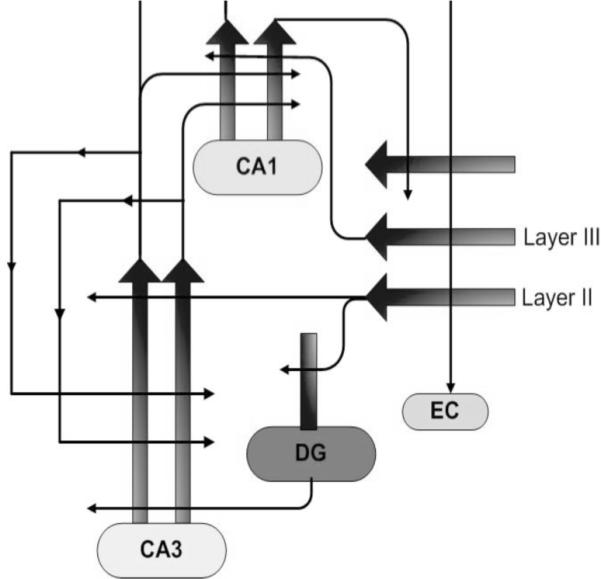Fig. (1). Schematic of the circuits in the hippocampal formation.

The entorhinal cortex (EC) provides cortically processed information, via layer II neurons, to the dentate gyrus (DG) and distal dendrites of CA3 principal pyramidal neurons. CA3 afferents, in addition to innervation of CA1, form a massive autoassociative input to CA3. Recurrent CA3 input produces generalization/pattern completion. EC input, which is weakened in aging and comprises a significant early lesion in AD, is essential for pattern separation/specific new encoding.
